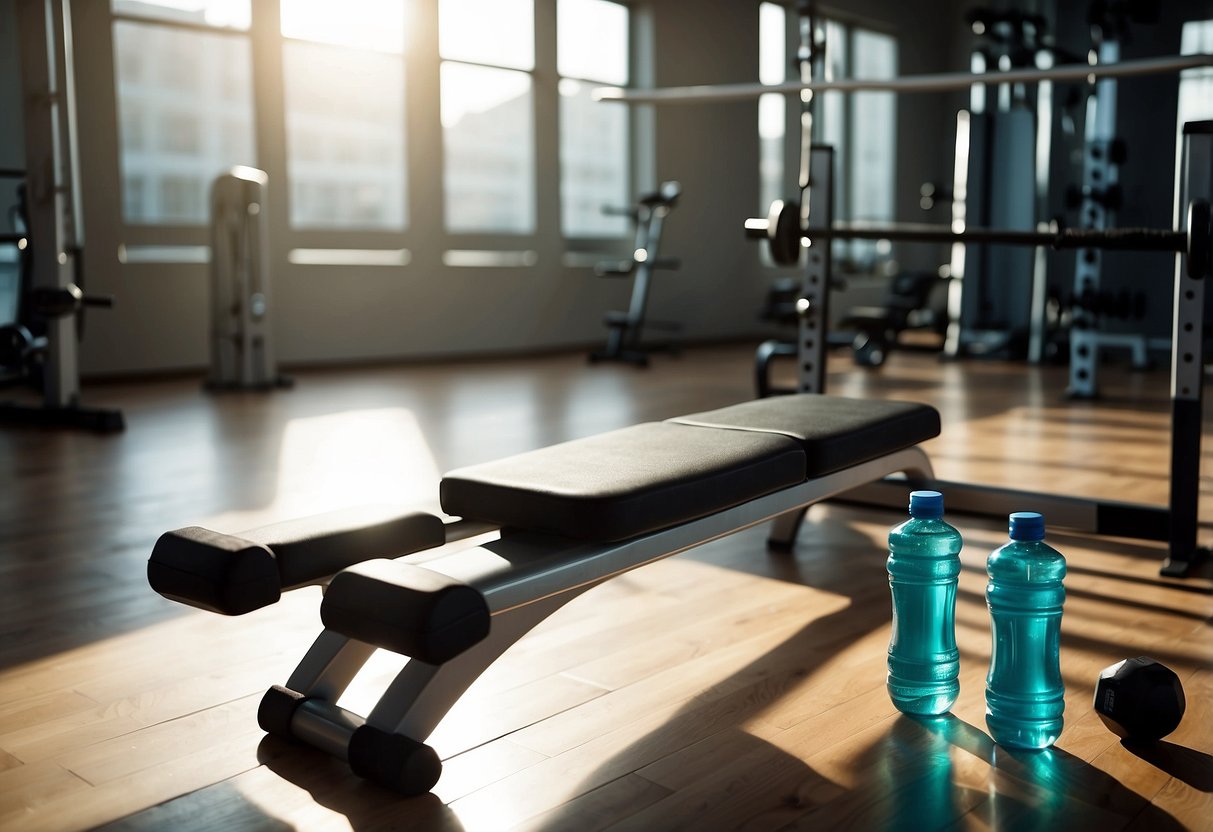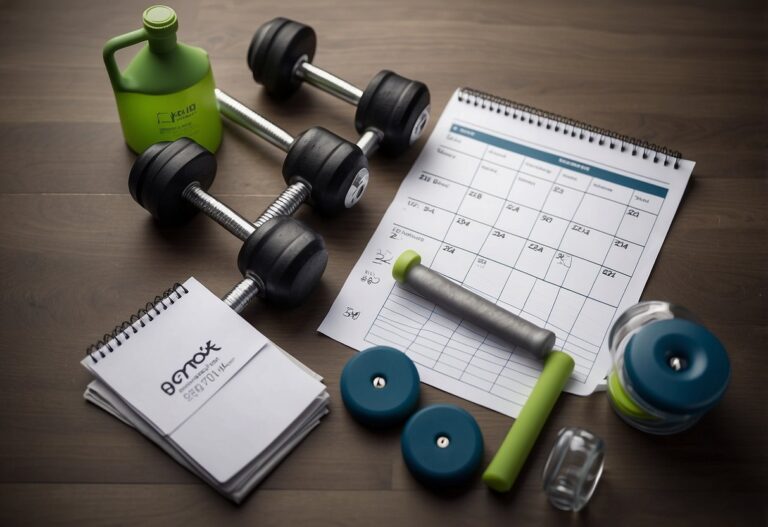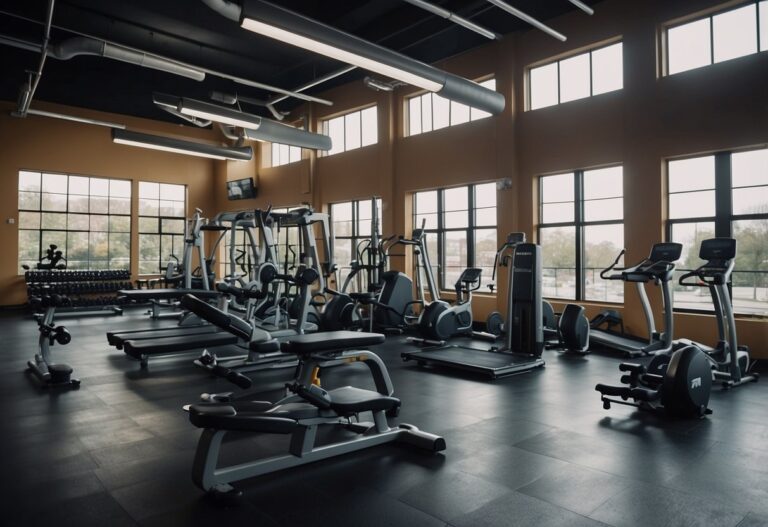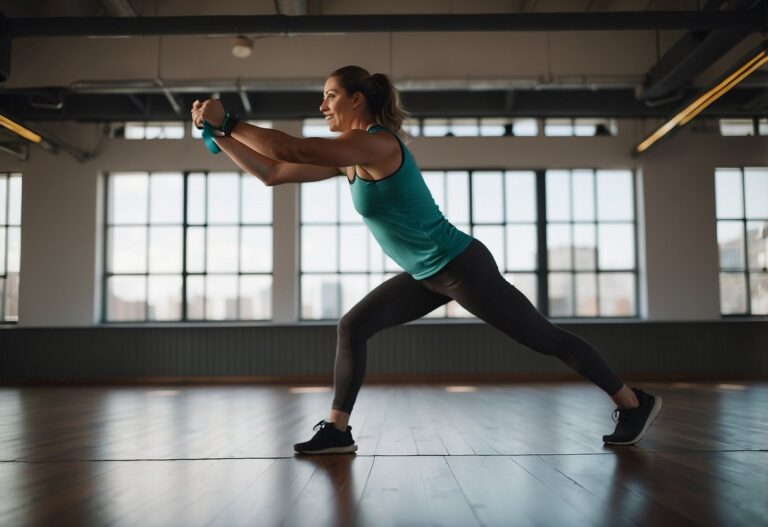When it comes to building strong and well-defined shoulders, having a well-rounded workout routine is key. There’s no single exercise that can target every muscle group in the shoulders; instead, a combination of exercises is necessary for balanced development. This article will guide you through effective shoulder workout tips to help you achieve your fitness goals.

Understanding which exercises to include and how to perform them correctly can make all the difference in your progress. By incorporating various exercises and techniques, you can maximise your shoulder strength and appearance.
Dumbbell Shoulder Press
The dumbbell shoulder press is a great exercise for building shoulder strength. You’ll need a pair of dumbbells and a bench that can adjust to a high angle.
To start, sit on the bench with your back pressed firmly against it. Hold a dumbbell in each hand at shoulder height with your palms facing forward.
Make sure to keep your chest up and core engaged. Press the dumbbells straight up until your arms are almost fully extended and the weights are above your shoulders.
Incorporating the dumbbell shoulder press into your routine can help you build stronger and more defined shoulders. Give it a try and see how it improves your workout! You can find more details on how to perform this exercise at BarBend.
Arnold Press
The Arnold Press is a great exercise for building strong and broad shoulders. Named after Arnold Schwarzenegger, it targets the front, medial, and rear delts.
In this move, you start with dumbbells held in front of you, palms facing you. As you press the weights overhead, you rotate your palms to face forward. This twist helps engage more muscles.
Try doing 3 to 6 sets of 6 to 12 reps using moderate weights for muscle growth. For a full shoulder routine, you can incorporate this press into the beginning of your workout.
Many people prefer the Arnold Press because it’s gentler on the shoulder joints. The twist in the movement keeps the exercise within the scapular plane, which can be beneficial for your shoulders.
Lateral Raises
Lateral raises are a key move in many shoulder workouts. They help build strong and rounded shoulders.
To do lateral raises, stand upright with a dumbbell in each hand. Keep your hands by your sides and your palms facing each other.
Engage your core and lift the dumbbells out to the sides. Your elbows should have a slight bend. Lift until your arms are parallel to the floor.
For a solid shoulder routine, you might include lateral raises in dumbbell shoulder workouts. Keep your movements controlled and steady. This will help prevent injuries and ensure you are working the muscles effectively.
You might find it helpful to try different variations. Using cables can maintain constant tension throughout the movement. This change keeps the workout interesting and targets the muscles differently.
Remember, not everyone will have the same experience. Adjust the weight and reps to fit your fitness level. Whether you’re a beginner or more advanced, lateral raises can be a valuable part of your shoulder workout.
Front Raises
Front raises are fantastic for targeting your shoulder muscles, particularly the front deltoids. To get started, stand tall with your feet shoulder-width apart and hold a dumbbell in each hand.
Raise one dumbbell in front of you until your arm is at shoulder height. Pause for a moment, then slowly lower the dumbbell back to the starting position. This movement should be controlled to avoid using momentum.
You can also try barbell front raises for more stability and heavier weights. Another variation involves using an incline bench to focus on the upper part of your front deltoids.
Face Pulls
Face pulls are a fantastic exercise for strengthening your shoulders and upper back. They mainly target the rear deltoids, trapezius, and other upper back muscles.
Stand facing a cable machine with your feet shoulder-width apart. Hold the rope attachment so your thumbs point towards your face. Pull the rope towards your face, leading with your elbows and squeezing your shoulder blades together.
Focused on shoulder stability, this move helps prevent the forward-leaning posture from too much chest work. They can be used as a warm-up or an accessory exercise in your training routine. Add them to your workout for balanced shoulder development.
Bent-Over Reverse Fly
The bent-over reverse fly is great for working your rear deltoids and upper back muscles. This exercise helps improve your posture and shoulder strength.
To do the bent-over reverse fly, stand with your feet shoulder-width apart and bend at the waist. Hold a dumbbell in each hand with your palms facing each other.
Lift the weights out to the sides, focusing on squeezing your shoulder blades together. It’s important to keep a slight bend in your elbows and not to swing the weights.
This move can help balance out your shoulder muscles. Strong rear deltoids are crucial for a well-rounded physique and avoiding injuries.
Consider adding the bent-over reverse fly to your routine if you feel your rear shoulder muscles are lagging. It’s also important to use weights that are manageable to maintain proper form.
Using lighter weights and doing higher reps can provide better results and minimise the risk of injury.
Standing Military Press
The standing military press is a fantastic exercise for building strong shoulders. It’s often called the shoulder press or overhead press.
To get started, place a barbell at chest height. Grip the bar with your hands just outside shoulder width. Keep your feet shoulder-width apart and lift the bar to your chest while stepping back slightly.
You’ll want to push the bar straight up until your arms are fully extended. Make sure your core stays tight to prevent arching your back. Lower the bar back to your chest with control.
This exercise targets your deltoid muscles and also works your triceps and upper chest. Since you do it standing up, it engages your core for stability, too. Consider adding the standing military press to your routine to enhance shoulder strength.
For a visual guide, you can check out this video tutorial.
Seated Dumbbell Press
When doing the seated dumbbell press, keep your back flat against the bench. This helps maintain good posture and prevents injuries. Grab the dumbbells and hold them at shoulder height with your palms facing forward.
Press the dumbbells overhead until your arms are fully extended. Make sure to exhale as you press up. It’s important to control the movement as you lower the weights back to your shoulders.
If you feel pressure in your neck or traps, you might need better thoracic spine extension or shoulder flexibility. Keep your core engaged to provide stability and reduce strain on your lower back.
Cable Lateral Raises
Cable lateral raises are a great way to build shoulder strength. They focus mostly on your middle deltoid muscle. This makes them ideal for enhancing shoulder size and definition.
To perform a cable lateral raise, stand in the centre of a cable machine. Hold the handle with one hand. Slowly raise your arm to the side until it is at shoulder height.
Keep your movements slow and controlled. This ensures you’re using your muscles effectively. Avoid swinging your body or using momentum.
For best results, try holding the position at the top for a few seconds. This enhances muscle engagement. Experiment with single-arm raises too, which can help balance strength between your shoulders. More detailed instructions can be found here.
Consistent practice with proper form will bring noticeable improvements in strength and appearance. Remember, it’s always a good idea to listen to your body and avoid overtraining.
Push Press
The push press is an excellent exercise for building strong shoulders. To get started, stand with your feet shoulder-width apart. Grip the bar with your fingertips, elbows pointing forward, and rest it on the front of your shoulders.
Dip into a shallow squat, then drive through your heels to push the barbell above your head. This move engages your legs, core, and shoulders.
Remember to keep your core tight and your back straight. This helps avoid injury and ensures you’re getting the most out of the exercise. For further details, check out this guide on push press instructions.
Understanding Shoulder Anatomy
Learning about shoulder anatomy will help you understand how to target the right muscles and perform exercises safely. This section covers the key muscles involved and the mechanics of the shoulder joint.
Key Muscles Involved
The main muscles in your shoulders are the deltoids. These can be broken down into three parts: anterior (front), medial (side), and posterior (rear). Each part has a unique function.
- Anterior Deltoids: These are located at the front of your shoulder. They help with movements such as lifting your arms in front of you.
- Medial Deltoids: These sit on the side of your shoulder. They are vital for lifting your arms to the sides.
- Posterior Deltoids: Located at the back, these muscles assist in moving your arms backwards.
Knowing these muscles can help you focus on the right areas during your workouts. For instance, exercises like the barbell front raise specifically target the anterior deltoids.
Joint Mechanics
The shoulder joint is one of the most complex in your body. It allows for a wide range of motions such as lifting, rotating, and swinging. This joint is called a ball-and-socket joint, which includes the ball-shaped head of the humerus fitting into the socket of the scapula (shoulder blade).
- Flexion and Extension: Flexion is the movement of raising your arm forward, while extension is lowering it back.
- Abduction and Adduction: Abduction is lifting your arm to the side, and adduction is bringing it back down.
- Rotation: This includes internal and external rotation, which are essential for movements involving twisting the arm.
Understanding these mechanics is crucial for performing exercises correctly and avoiding injury. For example, doing the dumbbell shoulder press can effectively work all parts of the deltoids while considering the shoulder joint’s range of motion.
Common Mistakes to Avoid
When working out your shoulders, it’s easy to make mistakes that can hinder progress or even result in injury. Two common pitfalls are overtraining and poor form.
Overtraining
Overtraining is a common issue, especially for those keen on building muscle quickly. It can be tempting to add more sets and exercises, but your shoulders need time to recover. Overworking your shoulder muscles can lead to fatigue, decreased performance, and even injuries like rotator cuff strains.
To avoid overtraining, ensure you have rest days scheduled in your workout routine. Your muscles repair and grow stronger during rest periods. Also, incorporate a mix of heavy lifting days with lighter, recovery-focused workouts. This approach helps balance muscle growth while allowing sufficient recovery time.
Variety in exercises is crucial too. Stick to a balanced workout plan that targets all parts of the shoulder, including the front, side, and rear delts. Remember, quality is more important than quantity. Focusing on fewer, well-executed exercises can lead to better results than cramming too many movements into your routine.
Poor Form
Using proper form is essential to effectively target your shoulder muscles and prevent injury. One common mistake is using too much weight, which can compromise your form. For example, when performing lateral raises, lifting weights that are too heavy can lead to shrugging and engaging your traps instead of your delts.
Focus on technique over heavy lifting. Perform each exercise with controlled movements. For instance, when doing overhead presses, keep your back straight and avoid arching. Proper form ensures you’re working the muscles intended and not risking unnecessary strain on other parts of your body.
Quick fixes like watching instructional videos or working with a trainer to identify and correct your form can be invaluable. Investing time in learning the correct technique pays off in the long run, as it not only helps in achieving your fitness goals but also keeps you safe during your workouts.







